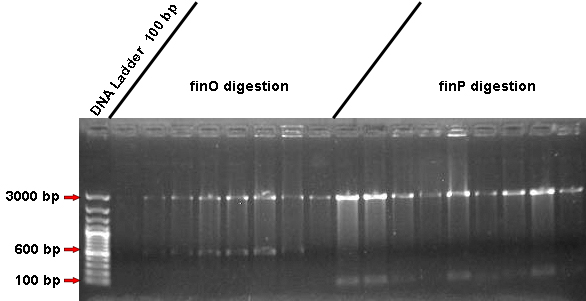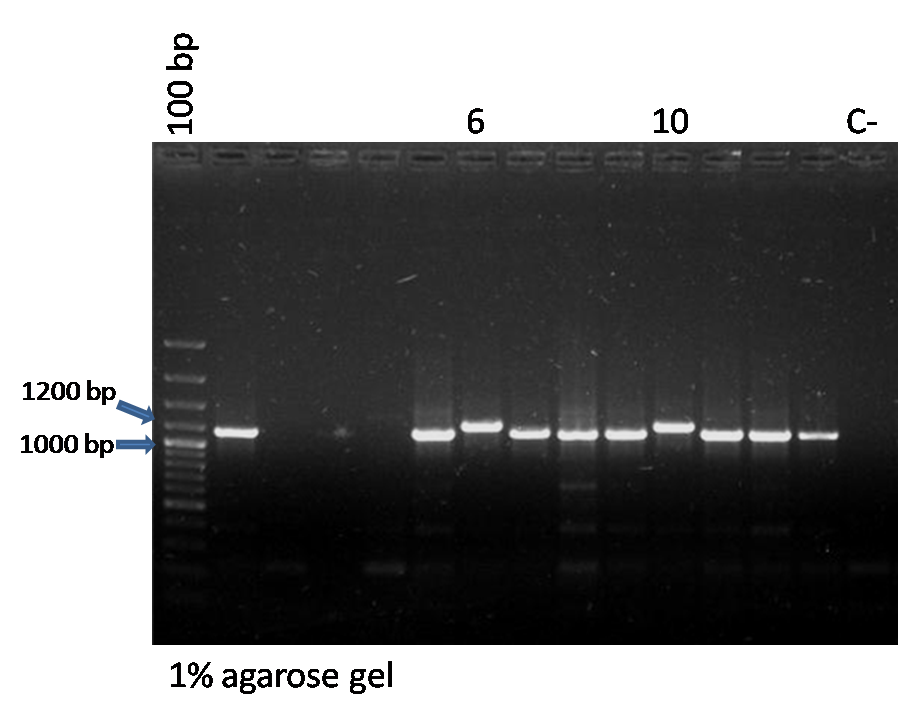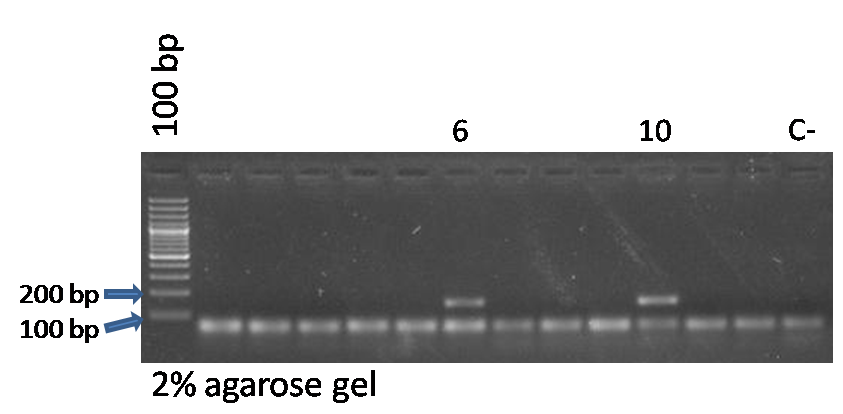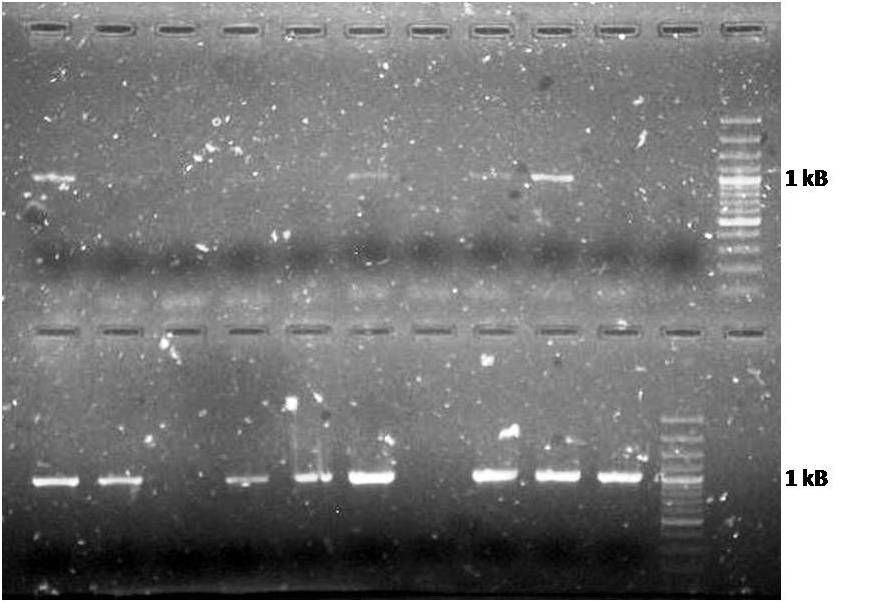Back to Calendar
ColiGuard
Another PCR colony of BBa K112806 + BBa B0015, another failure...
A lot of colonies have grown again, we selected 15 to do the Colony PCR, but none of them was positive.
We are really worried with this, our time is finishing. We decided to chenge radically our strategy. We will change the terminator to BBa B0014 instead of BBa B0015 because the digestion of B0015 is not working. We let B0014 digesting ON with EcoRI and XbaI
Marcos
finO and finP with pGEM - confirmation
- We decided that we are going to confirm such ligations by performing:
-A Digestion: with XbaI and SpeI restriction enzymes, in order to release our parts from pGEM plasmid;
-A PCR: performed with the specific forward primer for our insert and with the reverse primer for pGEM plasmid (M13), in order to confirm that, once our inserts are indeed in there, they are also in the correct frame position.
- Seeing that, today we performed the digestion with EcoRI and SpeI for all of our minipreps samples that actually worked. Digestion lasted 3 hours.

- According to the picture, the digestion excised a fragment of expected size (600 bp for finO and 120 bp for finP) in almost all samples! That's an important clue on confirming our inserts's correctly ligation!
Gabriel and Marcelo
PY Promoter - Colony-PCR screening
- VF/VR, the verification primers of BBa_J23100 plasmid:
- Ppy-F-1 and Ppy-R, the pair of primers that amplify our inserted sequence (PY1):
- The expected size for PY1 + BBa_J23100 amplified with VF/VR primers is 1190 bp.
- The expected size for BBa_J23100 without our insert amplified with VF/VR primers is 1057 bp.
- The expected size for PY1 + BBa_J23100 amplified with PY primers is 133 bp.
Fabi and Léo
Cre-Recombinase - Confirmation: Part I
After performing minipreps (on October 5th) for 20 inoculated cultures, possibly harbouring our Cre-Recombinase without ATG's Biobricks, it's time to start the confirmation procudures. Regarding "confirmation procudures", we mean a two stages procedure: (1) perform a specific PCR for Cre-Recombinase and (2) perform a digestion, aiming in excising a fragment of expectable size from the pSB1A3 vector.
Today we did stage I, a PCR reaction using Cre's specific designed primers, running an agarose gel straight after reaction ended.
Thereby, according to Stage I.... we did it! Several samples appears to contain our Cre's Biobrick!
If we succeed in Stage II, we will finally be able to say we got a biobrick! =]
Víctor
YeastGuard
- <p style="text-align:justify;">The plates containing E. coli transformed with pDLD didn’t grow. We repeated the ligation reaction and transformed competent E. coli again.
YFP+Terminator
- We decided to check over the size of the terminator part at the registry, since we had to much work with it. We submited its sequence to the BLAST algorithm and discovered that this biobrick is the same as YFP one!!! =( We got so desapointed =/ It was the only terminator biobrick to be used in yeasts.
pADH1+YFP
Today we started the experiments to obtain a new device in biobrick format. It’s the ADH1+YFP biobrick.
First of all, we did these digestions: 1)YFP digestion using the enzymes XbaI and PstI; 2)pADH1 (biofusion) digestion using the enzymes SpeI and PstI.
Wesley
YEP358
We transformed E. coli with YEP358-β galactosidase plasmid (Protocol 3)
|






|
 "
"


















